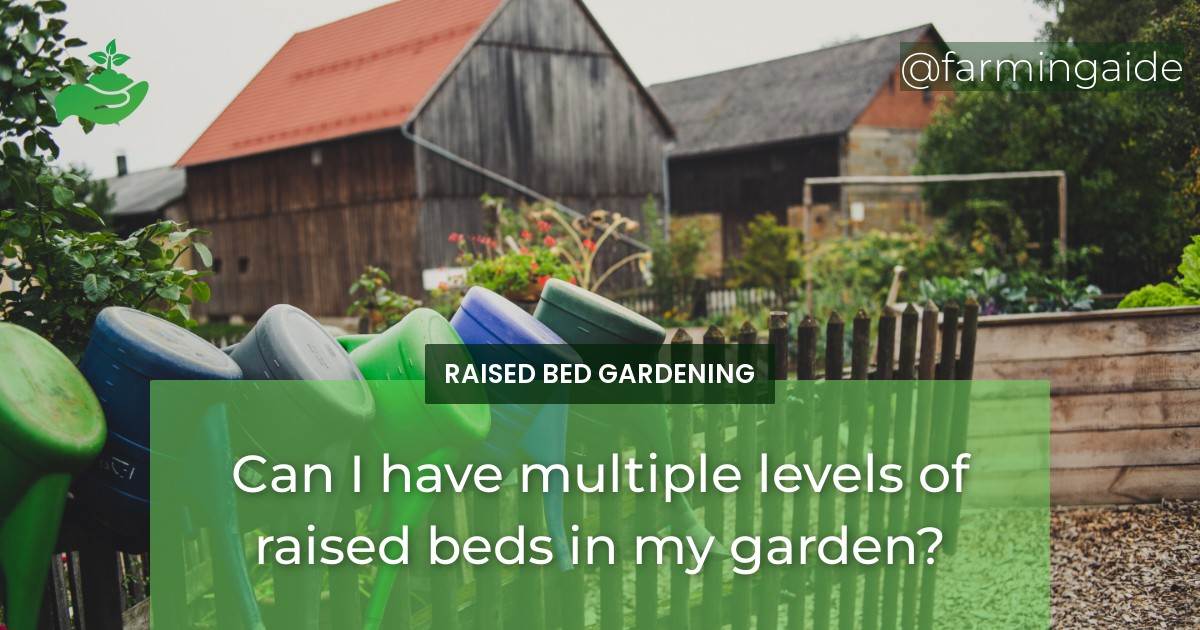Yes, you can have multiple levels of raised beds in your garden. Multi-level raised bed gardens, also known as tiered or stacked raised beds, are an excellent way to maximize your gardening space while improving drainage, soil quality, and nutrient retention. With this type of garden bed, you can grow a variety of crops or flowers that require different soils or watering needs in one area.
Benefits of Tiered or Stacked Raised Bed Systems
Maximizing Garden Space
Tiered or stacked raised beds allow you to grow more plants in a smaller area. By stacking the beds on top of each other, you can create a vertical garden and maximize the space you have available. This is especially helpful if you have limited yard space or want to grow a lot of plants in a small area.
Improved Drainage
With tiered or stacked raised beds, excess water drains easily from the upper beds to the lower ones, preventing waterlogging and ensuring that your plants receive the proper amount of moisture. Improved drainage also means that your plants’ roots have more access to oxygen, which is essential for healthy plant growth.
Better Soil Quality and Nutrient Retention
With multi-level raised bed gardens, you can control the soil quality and nutrient level of each bed, ensuring that your plants receive the ideal growing conditions for their needs. This is especially useful if you’re growing plants that require different soil types or nutrient levels.
Enhanced Aesthetics
Tiered or stacked raised beds are not only functional but also visually appealing. With varying levels of plants, colors, and textures, you can create an eye-catching garden that adds beauty to your yard or patio.
Considerations for Building Tiered or Stacked Raised Bed Systems
Materials
The materials you choose for your tiered or stacked raised beds will depend on your budget and the design you have in mind. You can use wood, concrete blocks, or even recycled materials, such as old tires or pallets. Make sure the materials are sturdy and can withstand the weight of the soil and plants.
Size and Height
When planning your tiered or stacked raised bed garden, consider the size and height of each bed. The lower beds should be wider and deeper than the upper ones to ensure proper drainage and stability. The height of each bed will also depend on the plants you’re growing and your accessibility needs.
Irrigation and Watering
Make sure your tiered or stacked raised beds have proper irrigation and watering systems in place. You can install a drip irrigation system or use a soaker hose to ensure each bed receives the right amount of water.
ALSO READ
Steps for Building Tiered or Stacked Raised Bed Systems
Planning and Design
The first step in building a tiered or stacked raised bed garden is to plan and design the layout. Decide on the size, height, and materials you’ll be using for each bed, and sketch out a rough design.
Site Preparation
Clear the area where you’ll be building your tiered or stacked raised beds of any debris, rocks, or weeds. Level the ground and make sure it’s compacted and stable.
Building the Bed Frames
Next, build the bed frames for each tier. Use the materials you’ve chosen and make sure the beds are level and sturdy. You can use screws, brackets, or stakes to hold the beds together.
Filling and Planting
Fill each bed with soil, compost, and organic matter. Plant your desired crops or flowers, making sure to follow the recommended spacing and planting instructions for each plant.
Tips for Maintaining Tiered or Stacked Raised Bed Systems
Regular Watering and Fertilizing
Make sure to water your tiered or stacked raised beds regularly and fertilize them as needed. Use organic fertilizers and follow the recommended dosage for each plant.
Weed Control
Keep your tiered or stacked raised beds weed-free by pulling any weeds as soon as you see them. Mulch your beds to prevent weeds from growing and to retain moisture.
Pest Prevention
Use natural pest control methods, such as companion planting or insect-repelling plants, to prevent pests from damaging your crops.
Rotating Crops
Rotate your crops each season to prevent soil-borne diseases and to ensure the soil has a balanced nutrient level.
ALSO READ
Can I Stack Multiple Levels of Raised Beds in a Small Garden Space?
Yes, you can stack multiple levels of raised beds for small garden space. This allows you to maximize your planting area without taking up too much horizontal space. Stacking raised beds also helps with soil drainage and prevents overcrowding of plants. It’s a great solution for small gardening areas.
Conclusion
Multi-level raised bed gardens are a great way to maximize your gardening space and improve your plant’s health. By following the right steps and considerations, you can create a beautiful and functional tiered or stacked raised bed garden that will provide you with fresh produce and a stunning visual display.


